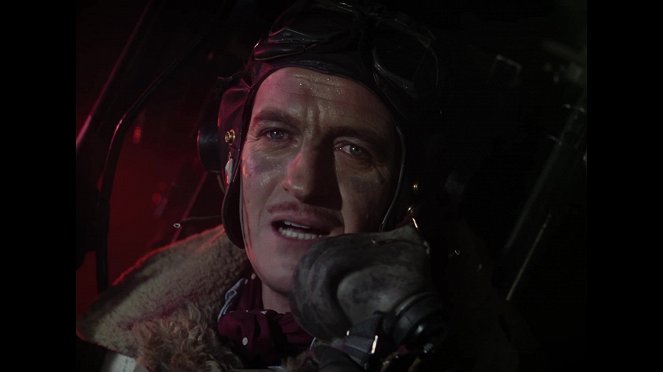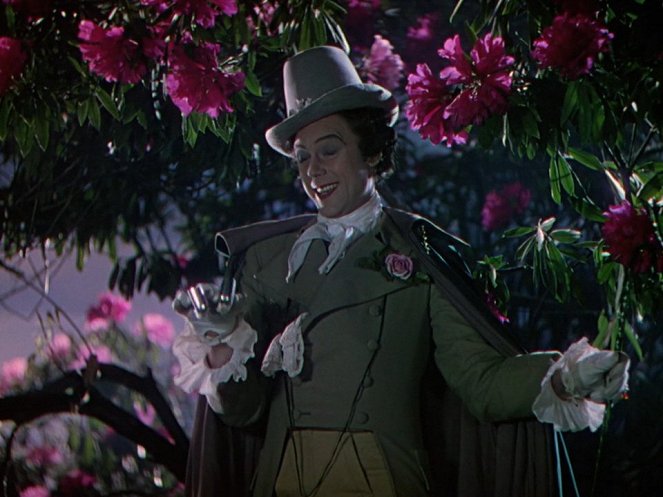Cinematography:
Jack CardiffComposer:
Allan GrayCast:
David Niven, Kim Hunter, Robert Coote, Kathleen Byron, Richard Attenborough, Bonar Colleano, Joan Maude, Marius Goring, Roger Livesey, Edwin Max (more)Plots(1)
Classic fantasy from Powell and Pressburger in which an RAF pilot must argue for his life in a celestial trial after a mix-up sees him survive a fall from his plane. When Peter Carter (David Niven)'s plane is struck on his way back to England from a bombing mission and his parachute destroyed, he prepares himself for death. Incredibly, however, he awakes safely on the ground the next day. It turns out that the emissary sent from Heaven to carry him to Heaven, Conductor 71 (Marius Goring), was unable to locate him in the fog, but has now arrived to take him to the next world. Carter refuses to go, having fallen in love with the radio operator, June (Kim Hunter), who talked to him while the plane was going down. A trial is convened in Heaven to see if Carter should be allowed to live on. Will the pilot be able to convince the court that his love for June is strong enough that he should be given another chance? (ITV DVD)
(more)Videos (1)
Reviews (2)
Nothing is stronger than love. Sure, it's promotional, but after the war, it's not surprising. What is much more important is the fact that it is inventive (not just the use of black and white and technicolor scenes), it is wonderfully magnificent and beautiful in its romance. This is a movie that has easily survived its time and still has something to say today. Unfortunately, it's sad that we still ignore that thing with love.
()
Thirst for life is equal to thirst for Technicolor. Stairway to Heaven is not only a visually captivating but also carefully thought-out film containing more than naïve lobbying for Anglo-American friendship. It calls into question the attempts to rationalise sensorially intangible phenomena and the impenetrableness of thinking in strictly legislative terms (love above the law). Thanks also (and literally) to the unwillingness to see matters of life and death in black and white, the validity of its humanistic message did not expire with the end of the Second World War. It is not made clear whether Peter’s visions are “real” or whether everything is taking place only in his wounded brain. Though the doctor is presented as a sceptic when it comes to phenomena that we cannot scientifically document, he is given the privilege of being the protagonist’s advocate in his dispute with death. The film is similarly ambiguous in its approach to traditions. Clinging to them hinders development (more precisely, it hinders love), but the ideas of great men are nevertheless used in the trial to demonstrate the maturity of a civilisation standing on a very solid cultural foundation. However, Stairway to Heaven is rightly appreciated primarily for its work with colour and space, which gives an abstract, slightly fairy-tale impression even on earth (the futurological design of the other world, in the spirit of Lang’s Metropolis, conversely evokes scientific starkness, which is further reinforced by numerous symmetrical compositions). The colours of the scenes tell us in advance the spirit in which the following minutes will pass. The red in the opening scene indicates not only danger, but also the budding romance between Peter and June (her deep-red lips are a reminder of the dominant colour of this scene later in the film). The yellow after the first awakening on earth may signify Peter’s uncertainty as to where he is, but also his newly charged life energy (the colour of the sun). The subsequent romantic scene is set among green plants with bold pink and red flowers – the lovers find themselves in a fairy tale or perhaps even in paradise. The scenes with natural colours and without one dominant hue are filled with an attempt to scientifically explain what happened to Peter. The sterile white of the hospital works similarly. Later, in the scene from the doctor’s house, the meaning of green (represented by the ping-pong table and the plants above it, as well as Philidor’s dress) changes. It is the colour of something unnatural (poisonous) that threatens Peter’s life. Besides taking care to ensure that unwanted colours do not interfere with their shots, Powell and Pressburger (and cinematographer Jack Cardiff) also humorously play with the transitions between colour and black-and-white, which serve as a self-referential visual metaphor for other transitions (between life and death, American and British culture, the rational and the paranormal). In any case, it is a picture of many colours. In more senses than you would probably expect from a sixty-year-old fantasy. 85%
()
(less)
(more)


